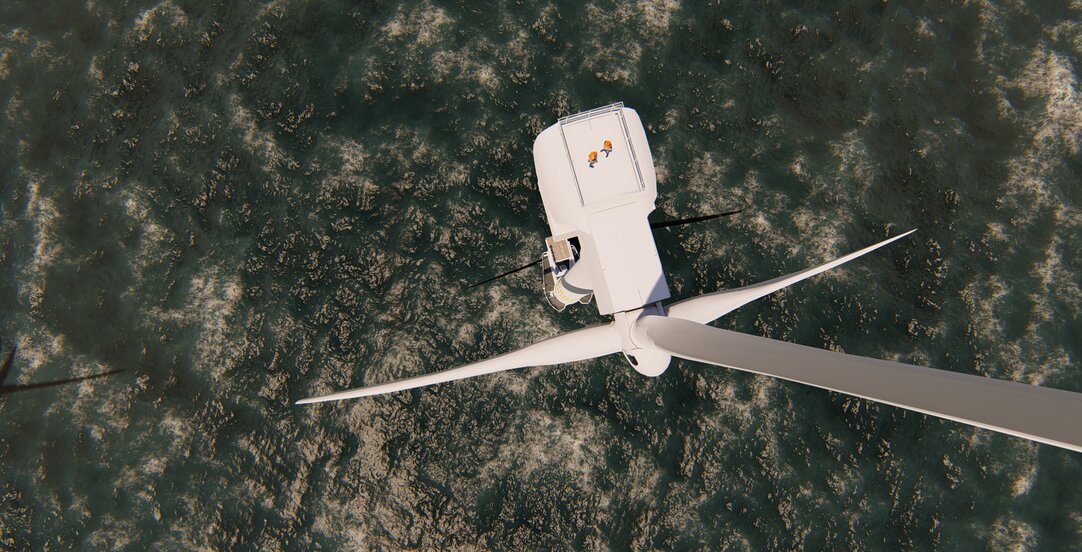From East Anglia to East Asia: A commercial perspective on the development of offshore wind in Taiwan and further afield

Alex Hookway, a Senior Lawyer in Wikborg Rein's Renewables Team, sat down with Sam Stout, Managing Director of Colebrook Offshore1 in London. They discussed the current status of offshore wind in the Asia-Pacific, the (sometimes painful) lessons learned from the early wind farms in Taiwan and further afield, and what's next for wind energy in the region.
Reading time 4 minutes
Sam, thanks for speaking with us today – what's currently keeping you and your team busy?
Thanks for the invite – the bulk of our work in SEA is in Taiwan at present as the main renewables market in South-East Asia, focusing on the construction phase of the first initial wind farms in Taiwan (Formosa and Yunlin amongst others). So this year we've had 13 or 14 vessels on hire in Taiwan that have been focused on the installation campaigns for those wind farms.
You've been involved in many of the North Sea campaigns over the years – what's different about working in Taiwan?
Because it’s a new market, people are still getting used to the local content and regulatory systems. The local regulations and processes are a world away from operating in the North Sea – it's essential to get to grips with what is required at the earliest opportunity, particularly for local crewing requirements where there may not be an established base of Seafarers with relevant experience. It's also fair to say that the local regulatory framework has developed significantly over the past 3 years as the market matures – and Taiwan does present challenging operational conditions.
So how do these local conditions impact vessel procurement and rates?
Rates for projects in Taiwan remain strong, but the impact of COVID – particularly quarantine and crew change costs – are being felt, though often not in the rates themselves. For vessel procurement, when operating in Taiwan first and foremost the Vessel has to have been built outside the PRC, which instantly limits the market. The first impact of this was felt when Charterers were looking to secure larger barges but it's an issue that persists with a variety of asset types.
Which was never historically an issue in the North Sea…
Exactly! All part of the learning curve working in Taiwan. Another difference from the North Sea is the Vessel flag and CR Class requirements. Not an uncommon practice in certain markets, but in Taiwan to bring in a foreign flag asset you need a permit from the MPB and Bureau of Energy. That gets approved, and then you are allowed to bring a foreign flag vessel in but to do that there need to be no blockages from local vessels.
As local owners are increasing their reach in terms of their partnerships with international owners and bringing vessels in – classing them and re-flagging them – they can lodge a block on those permits. So you can't bring in a foreign-flagged asset if there is a block from a locally flagged asset until that blockage is removed.
So are JVs the solution for established foreign contractors, or are there other options?
It varies a little, it doesn't necessarily have to be a JV depending on the asset or work scope. There are certain licenses required for particular work roles and some of these can only be obtained through a local entity. So care and consideration need to be given to the specific work role the vessel will be performing, and which licenses might be required to comply with local regulations.
Taiwan is keeping you busy now, but what's next?
There is a high degree of confidence in that market and as we move to O&M phases there will be requirements for long term SOVs to service the fields. Beyond Taiwan, we see Korea, Japan, and Vietnam being big growth markets from the middle of the decade onwards. They will vary in the requirements for vessels; floating wind may become more prevalent in Japan and Vietnam, while an already established OSV market may provide limited opportunities for international Owners etc. Whilst they vary in the details there are promising signs from these growth markets.
And we can't complete a discussion about wind power in Asia without discussing China and the enormous offshore development potential it has…
It's certainly a market on the move, and we've seen numerous enquiries from Chinese operators looking to acquire tonnage, and there is several conversions hitting the water to meet the increasing demand within China. We do, however, expect that domestic operators will largely dominate.
CBO is a fully independent and dynamic vessel procurement specialist, focused on providing solutions to the Renewables and EPCI market.